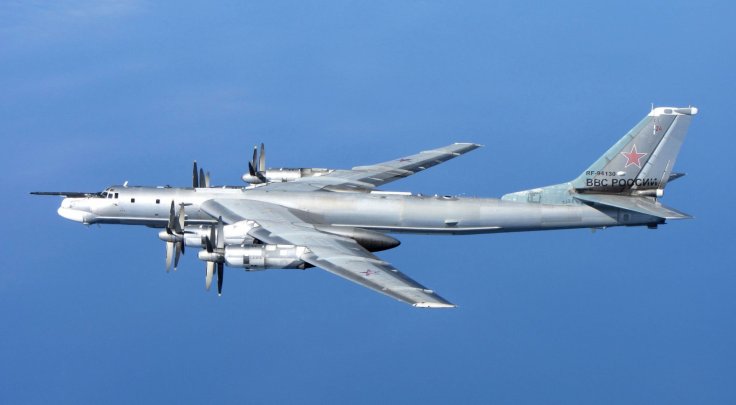Russian nuclear bombers were seen flying near the Ukrainian border as Moscow launched a cruise missile attack against Lviv, which borders NATO member Poland. Russian missiles struck Ukraine's military facilities in Lviv. Videos that emerged online have shown buildings on fire and catastrophic flames sending plumes into the sky.
Some videos have also appeared on the internet showing Russia's Tu-95 nuclear bombers flying near the Ukrainian border as Moscow is under immense pressure to avenge the sinking of Russian warship Moskva, which was hit by Ukraine's Neptune missiles last week.
Video shot on Monday and Saturday showed four Russian aircraft, that are used to carry nuclear bombs, flying over the Kaluga region between Moscow and the Ukrainian border. Aircraft resembled Russia's Tu-95s, which were flying in striking distance of Ukraine.
Putin had deployed the Tu-95s to buzz Britain at moments of high tension, for example in February this year when the Royal Air Force scrambled Typhoon fighters to escort two Bears off northern Scotland, according to the Daily Mail.

Videos that emerged from Lviv showed plumes of thick, black smoke rising over the buildings. Shattered windows and damaged facilities were also seen in the video.
Another video shot by a civilian appeared to show a cruise missile flying overhead to strike the Lviv.
The strikes in Lviv came weeks after Russia withdrew its troops from the Kyiv region and started focusing on Ukraine's east region after talks mediated by Turkey between Moscow and Kyiv.
Silver Giant of Skies
Russia's bomber TU-95 is considered a silver giant of the skies and NATO finds it and known to NATO by the codename Bear. The aircraft is a 4-engine turboprop bomber.
The aircraft was first introduced in 1956 and is believed to be equivalent to the US B-52 bomber. It can carry six nuclear missiles within its payload.
The Tu-95V was intended to carry large hydrogen bombs as these bombs were not made operational by the end of the 1950s.
Nevertheless, in 1961, the overhaul of a TU-95V aircraft took place at plant Nr 18 in Kuibyshev. The aircraft carried the hydrogen bomb that was tested on 31 October 1961, which weighed about 27,500 kg and had a yield of 58 megatons, according to the Nuclear Forces Guide.
Read more









